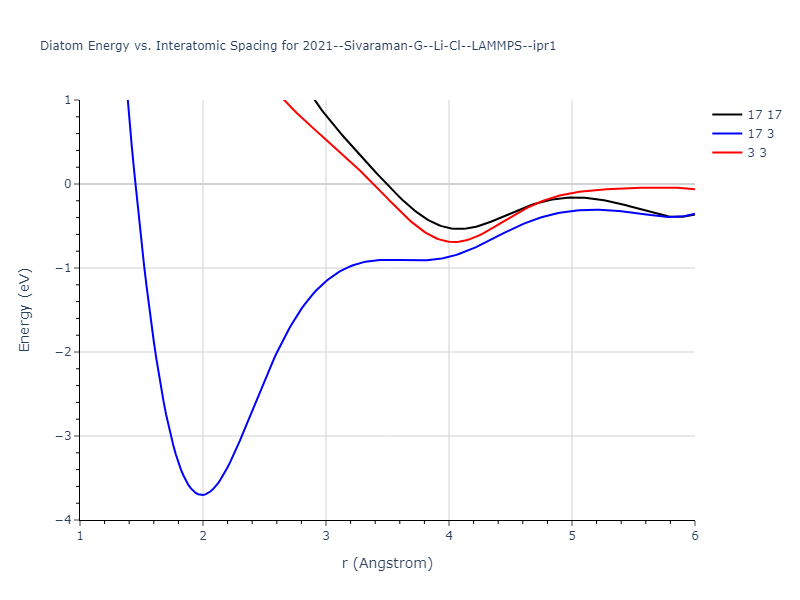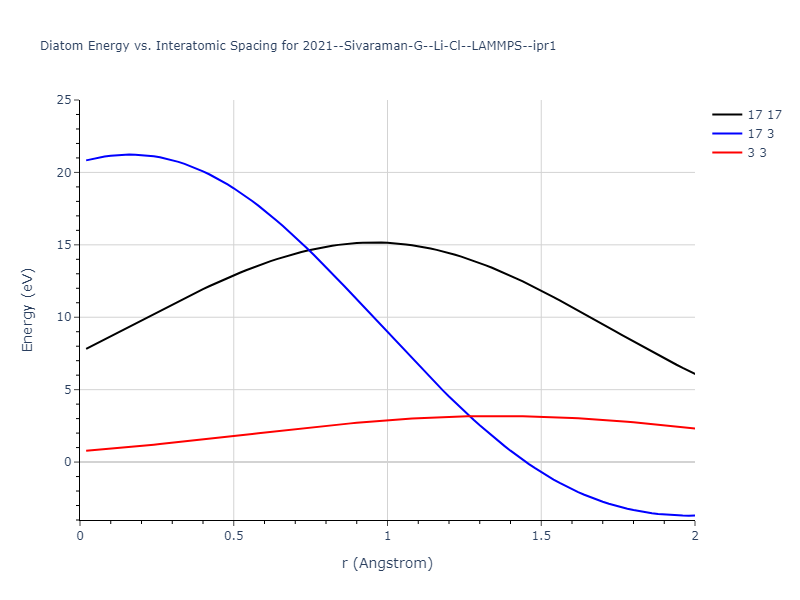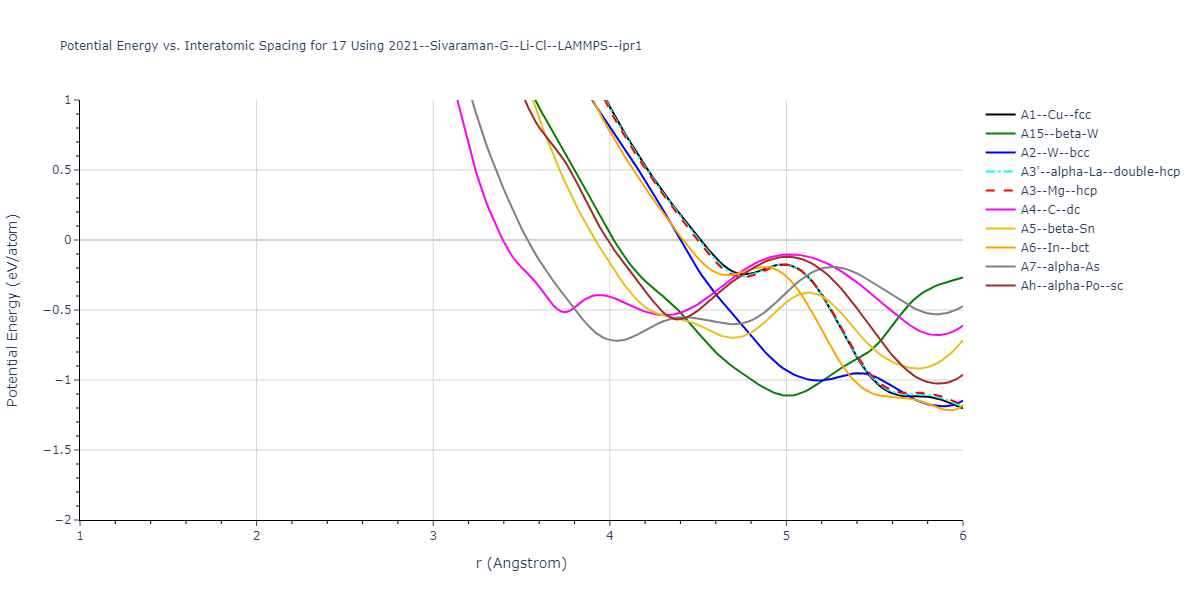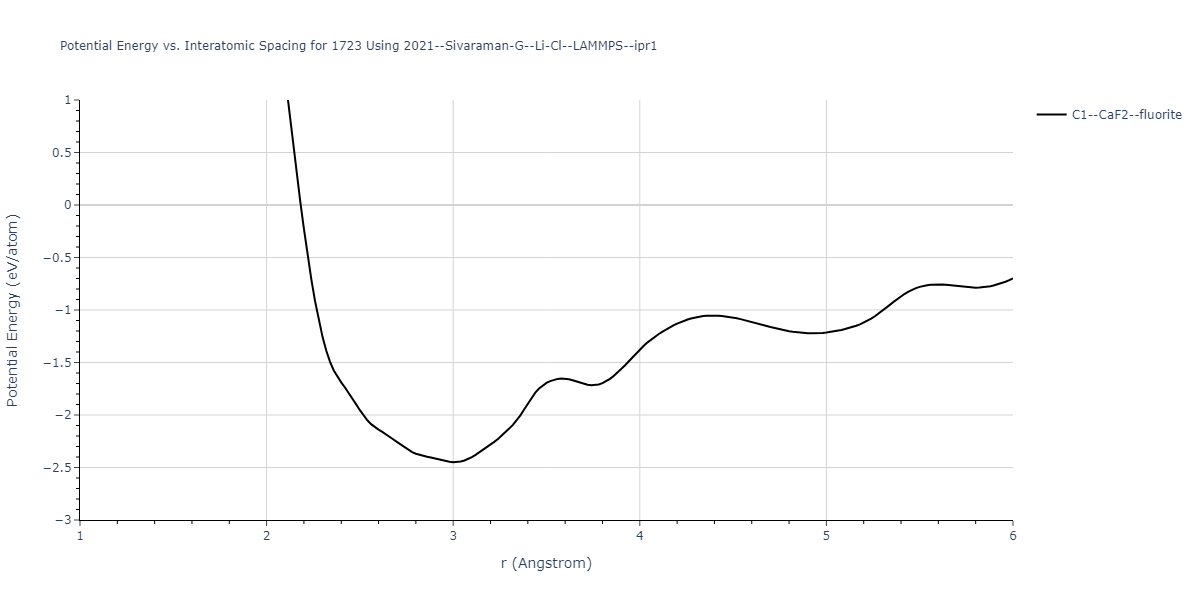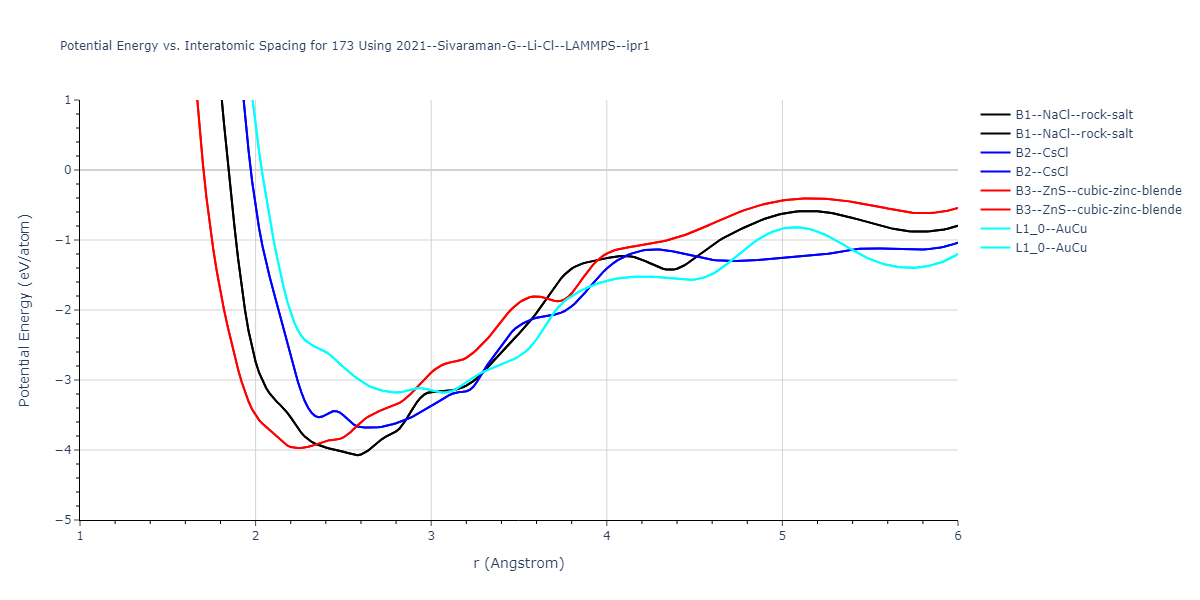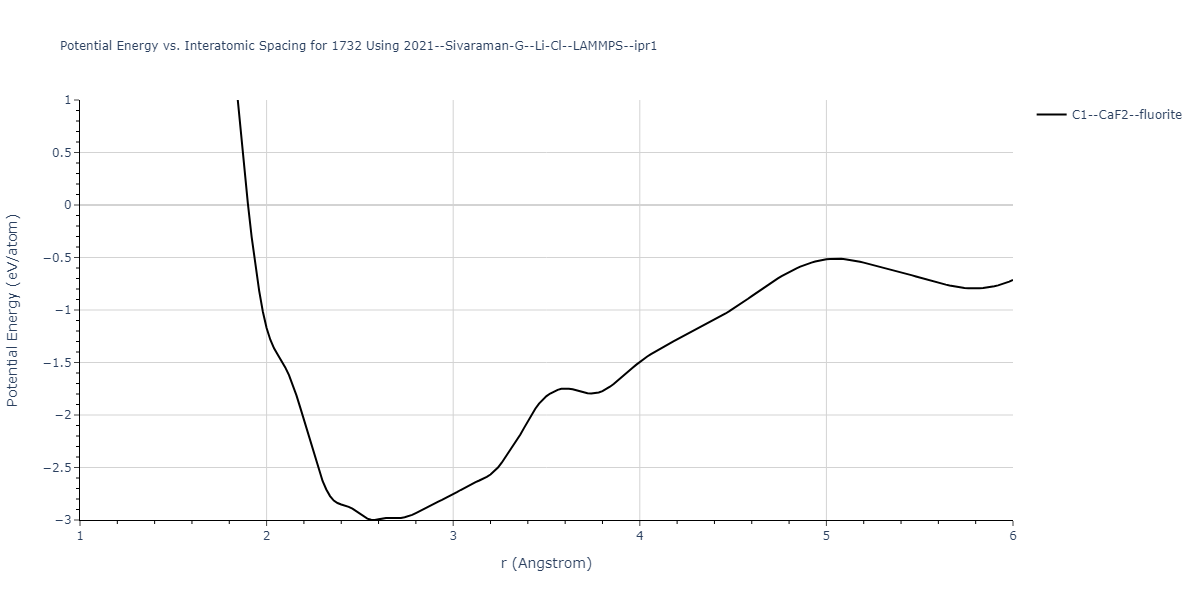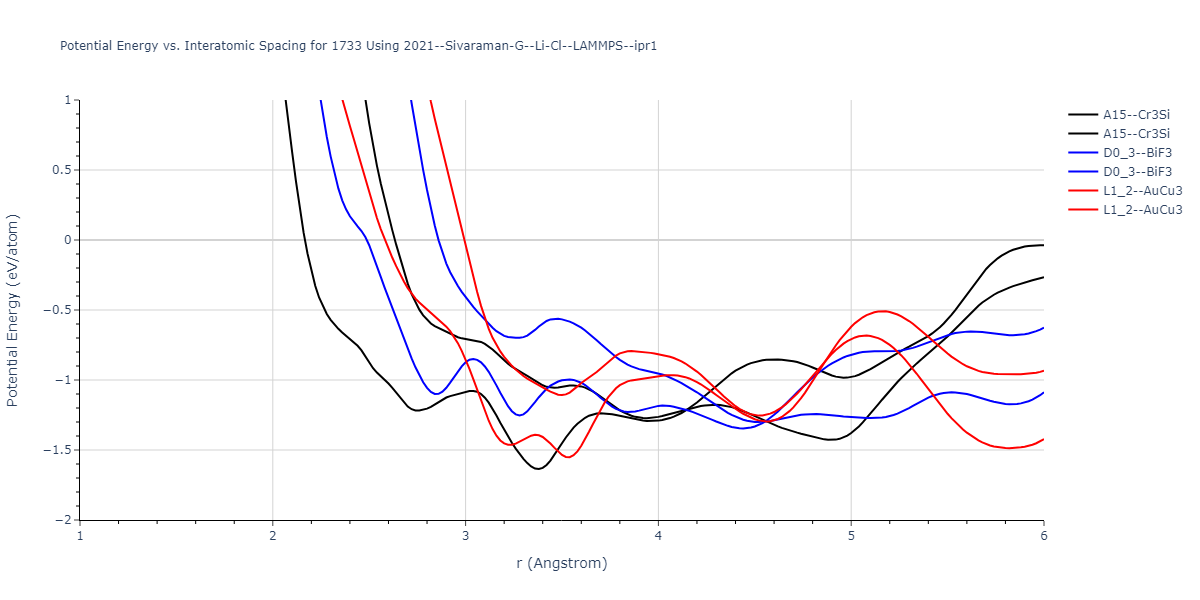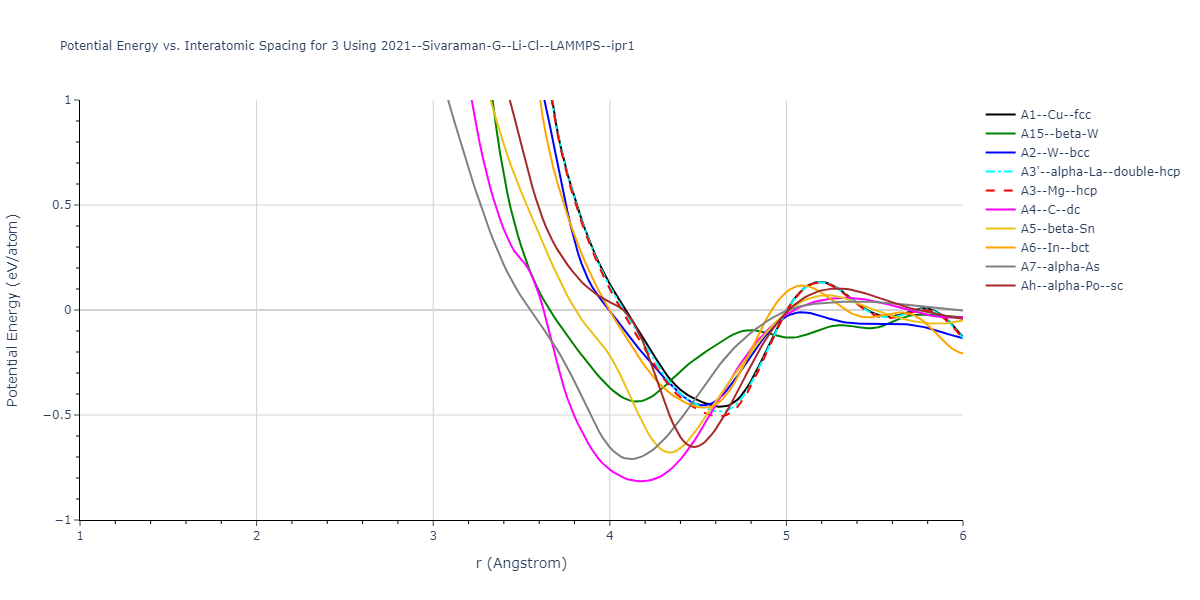-
Citation: G. Sivaraman, J. Guo, L. Ward, N. Hoyt, M. Williamson, I. Foster, C. Benmore, and N. Jackson (2021), "Automated Development of Molten Salt Machine Learning Potentials: Application to LiCl", The Journal of Physical Chemistry Letters 12(17), 4278-4285. DOI: 10.1021/acs.jpclett.1c00901.Abstract: The in silico modeling of molten salts is critical for emerging "carbon-free" energy applications but is inhibited by the cost of quantum mechanically treating the high polarizabilities of molten salts. Here, we integrate configurational sampling using classical force fields with active learning to automate and accelerate the generation of Gaussian approximation potentials (GAP) for molten salts. This methodology reduces the number of expensive ab initio evaluations required for training set generation to O(100), enabling the facile parametrization of a molten LiCl GAP model that exhibits a 19000-fold speedup relative to AIMD. The developed molten LiCl GAP model is applied to sample extended spatiotemporal scales, permitting new physical insights into molten LiCl's coordination structure as well as experimentally validated predictions of structures, densities, self-diffusion constants, and ionic conductivities. The developed methodology significantly lowers the barrier to the in silico understanding and design of molten salts across the periodic table.
Notes: This potential was designed for molten LiCl.
-
See Computed Properties
Notes: These files were provided by Ganesh Sivaraman on August 6, 2022. The files are also hosted at the link below.
File(s):READMELink(s):
gap_LiCl.xml
gap_LiCl.xml.sparseX.GAP_2020_12_9_-360_0_11_59_7251
gap_LiCl.xml.sparseX.GAP_2020_12_9_-360_0_11_59_7252
gap_LiCl.xml.sparseX.GAP_2020_12_9_-360_0_11_59_7253
gap_LiCl.xml.sparseX.GAP_2020_12_9_-360_0_11_59_7254
gap_LiCl.xml.sparseX.GAP_2020_12_9_-360_0_11_59_7255
train.xyz
quip_train.xyz
test.xyz
validate.py
Implementation Information
Diatom Energy vs. Interatomic Spacing
Plots of the potential energy vs interatomic spacing, r, are shown below for all diatom sets associated with the interatomic potential. This calculation provides insights into the functional form of the potential's two-body interactions. A system consisting of only two atoms is created, and the potential energy is evaluated for the atoms separated by 0.02 Å <= r <= 6.0> Å in intervals of 0.02 Å. Two plots are shown: one for the "standard" interaction distance range, and one for small values of r. The small r plot is useful for determining whether the potential is suitable for radiation studies.
The calculation method used is available as the iprPy diatom_scan calculation method.
Clicking on the image of a plot will open an interactive version of it in a new tab. The underlying data for the plots can be downloaded by clicking on the links above each plot.
Notes and Disclaimers:
- These values are meant to be guidelines for comparing potentials, not the absolute values for any potential's properties. Values listed here may change if the calculation methods are updated due to improvements/corrections. Variations in the values may occur for variations in calculation methods, simulation software and implementations of the interatomic potentials.
- As this calculation only involves two atoms, it neglects any multi-body interactions that may be important in molecules, liquids and crystals.
- NIST disclaimer
Version Information:
- 2019-11-14. Maximum value range on the shortrange plots are now limited to "expected" levels as details are otherwise lost.
- 2019-08-07. Plots added.
Cohesive Energy vs. Interatomic Spacing
Plots of potential energy vs interatomic spacing, r, are shown below for a number of crystal structures. The structures are generated based on the ideal atomic positions and b/a and c/a lattice parameter ratios for a given crystal prototype. The size of the system is then uniformly scaled, and the energy calculated without relaxing the system. To obtain these plots, values of r are evaluated every 0.02 Å up to 6 Å.
The calculation method used is available as the iprPy E_vs_r_scan calculation method.
Clicking on the image of a plot will open an interactive version of it in a new tab. The underlying data for the plots can be downloaded by clicking on the links above each plot.
Notes and Disclaimers:
- These values are meant to be guidelines for comparing potentials, not the absolute values for any potential's properties. Values listed here may change if the calculation methods are updated due to improvements/corrections. Variations in the values may occur for variations in calculation methods, simulation software and implementations of the interatomic potentials.
- The minima identified by this calculation do not guarantee that the associated crystal structures will be stable since no relaxation is performed.
- NIST disclaimer
Version Information:
- 2020-12-18. Descriptions, tables and plots updated to reflect that the energy values are the measuredper atom potential energy rather than cohesive energy as some potentials have non-zero isolated atom energies.
- 2019-02-04. Values regenerated with even r spacings of 0.02 Å, and now include values less than 2 Å when possible. Updated calculation method and parameters enhance compatibility with more potential styles.
- 2019-04-26. Results for hcp, double hcp, α-As and L10 prototypes regenerated from different unit cell representations. Only α-As results show noticable (>1e-5 eV) difference due to using a different coordinate for Wykoff site c position.
- 2018-06-13. Values for MEAM potentials corrected. Dynamic versions of the plots moved to separate pages to improve page loading. Cosmetic changes to how data is shown and updates to the documentation.
- 2017-01-11. Replaced png pictures with interactive Bokeh plots. Data regenerated with 200 values of r instead of 300.
- 2016-09-28. Plots for binary structures added. Data and plots for elemental structures regenerated. Data values match the values of the previous version. Data table formatting slightly changed to increase precision and ensure spaces between large values. Composition added to plot title and structure names made longer.
- 2016-04-07. Plots for elemental structures added.
